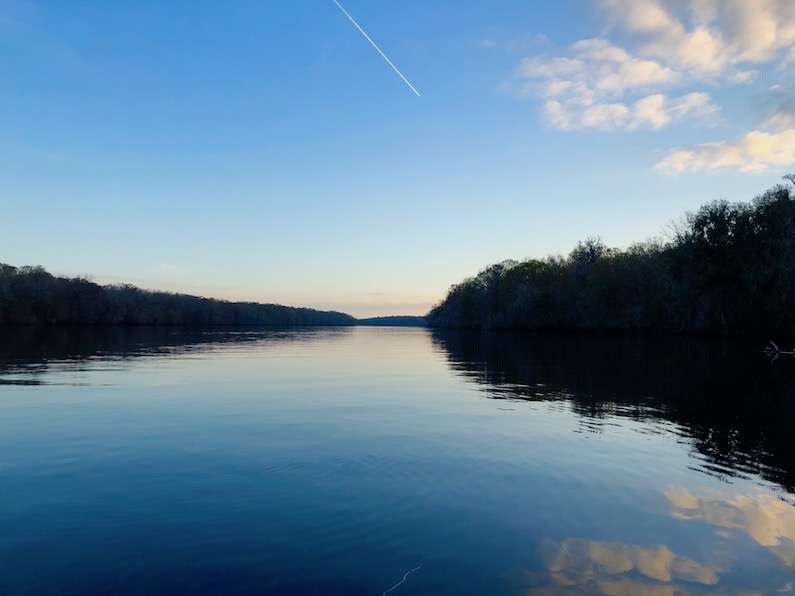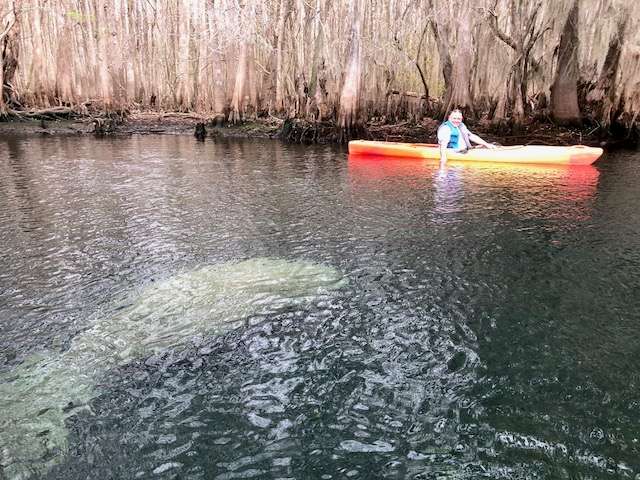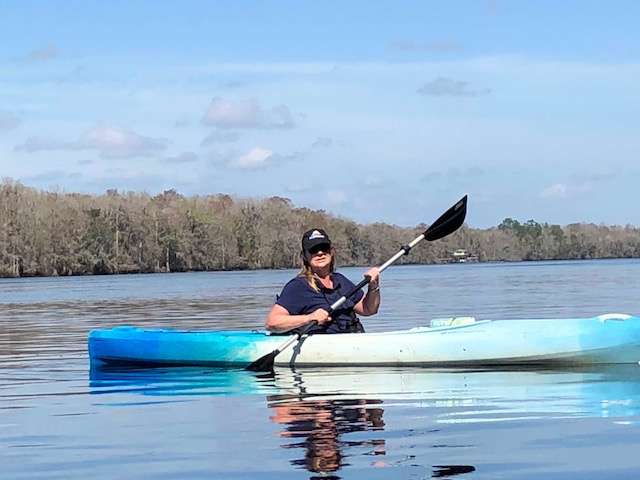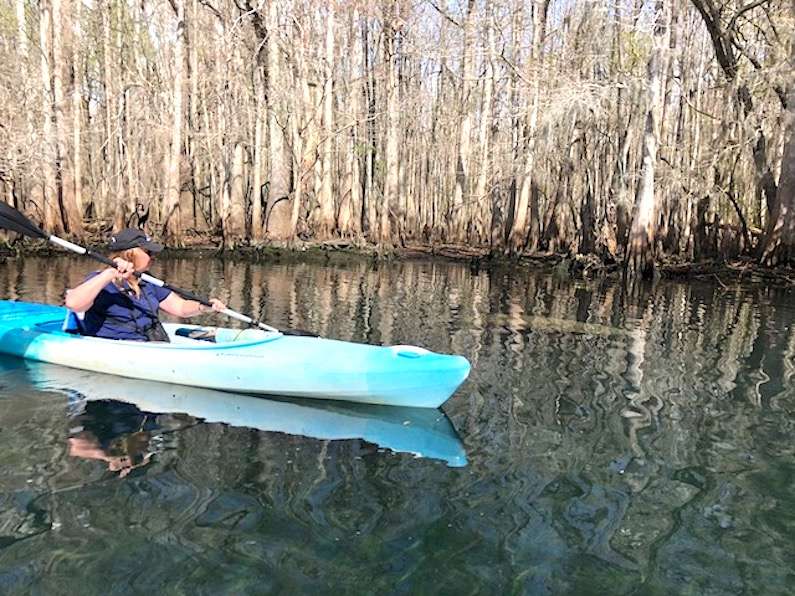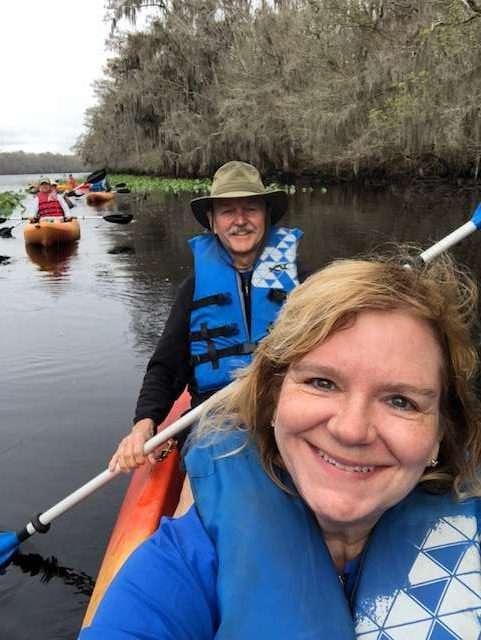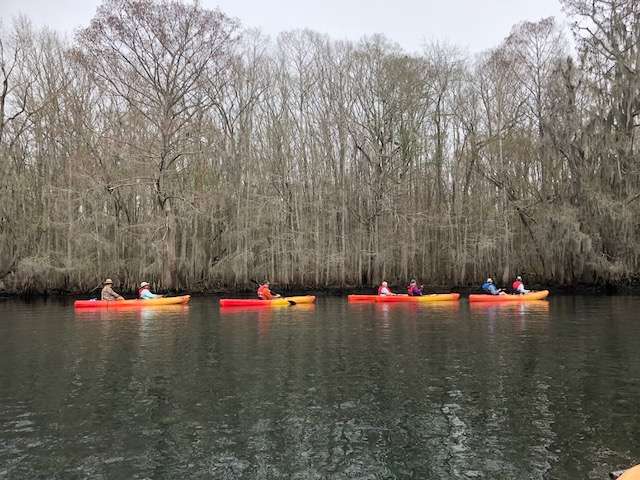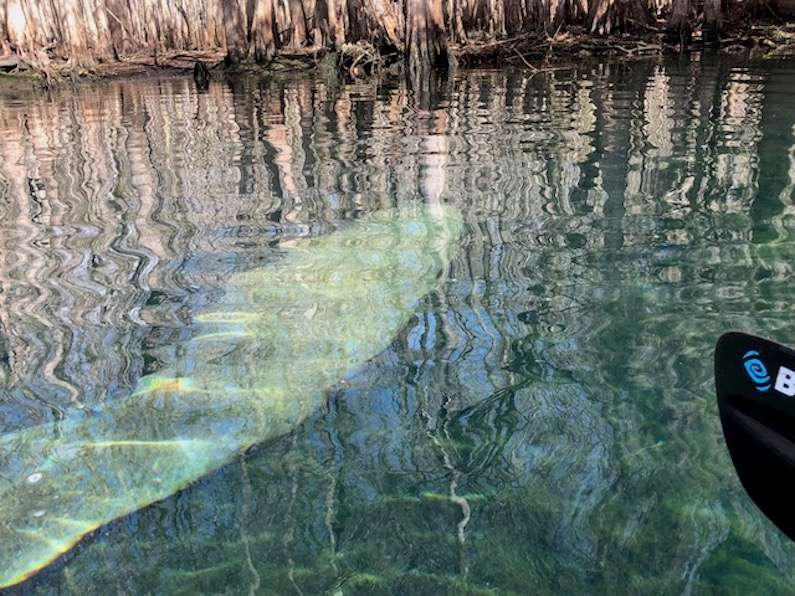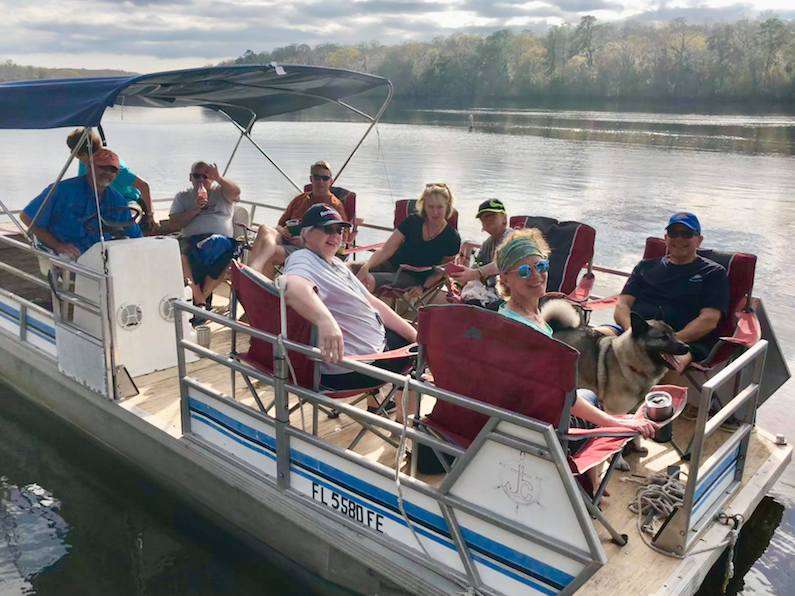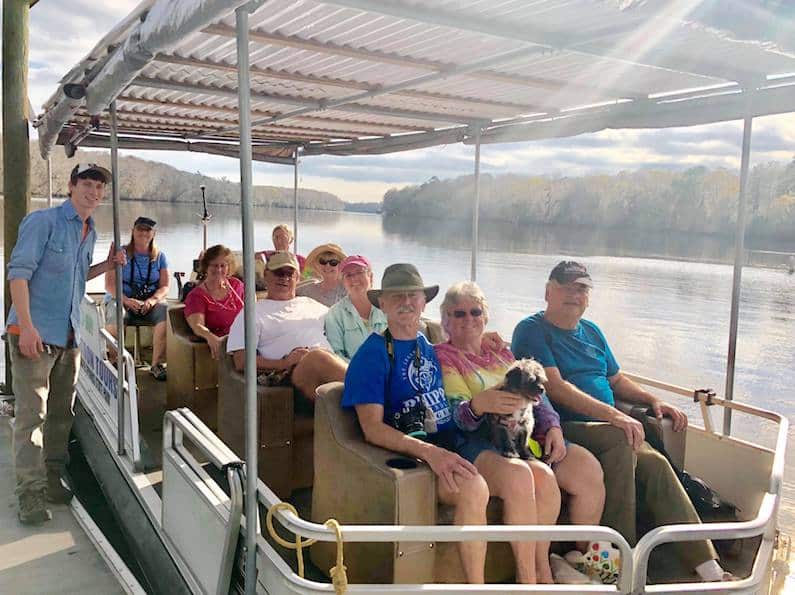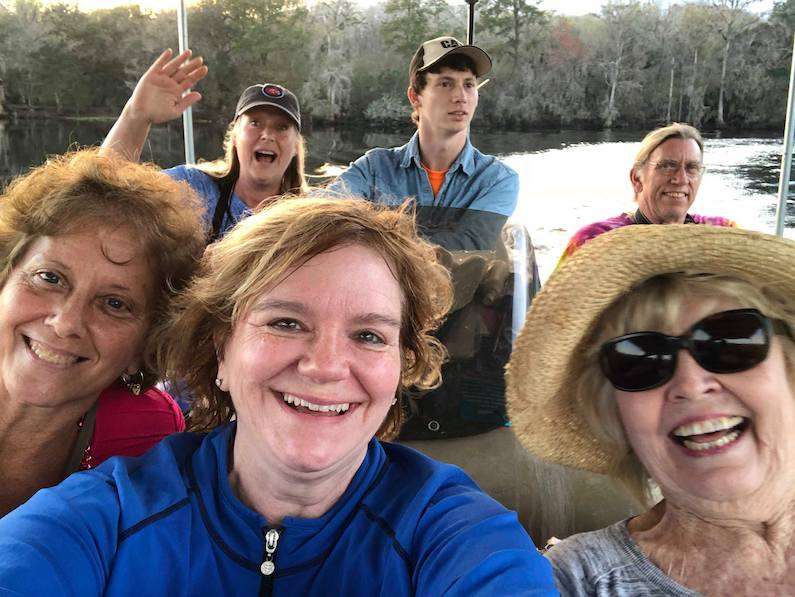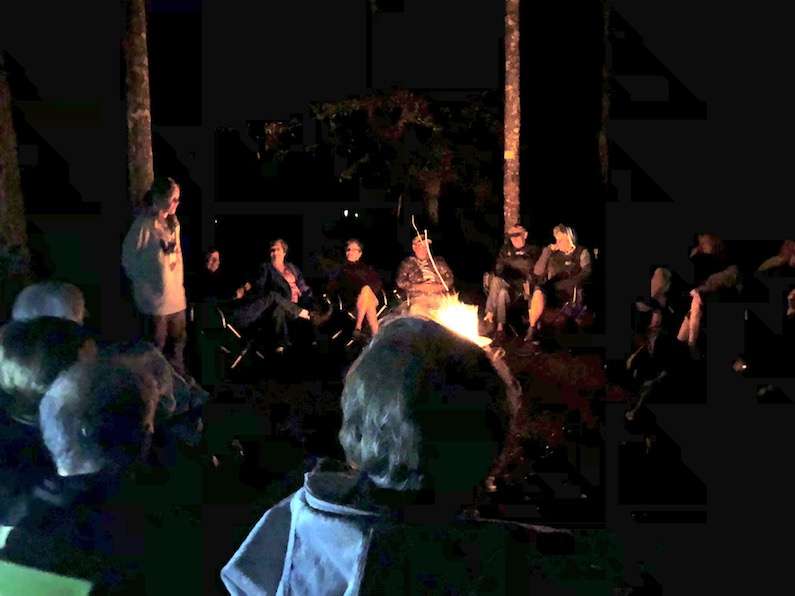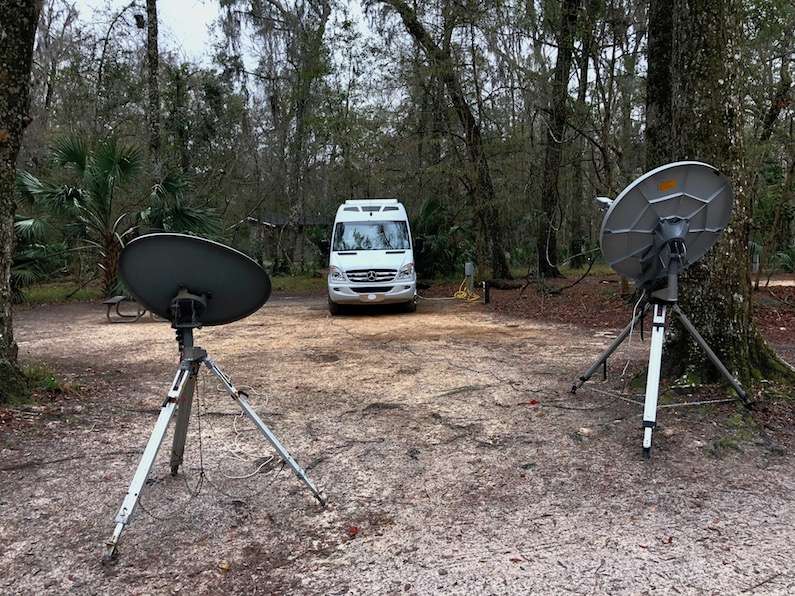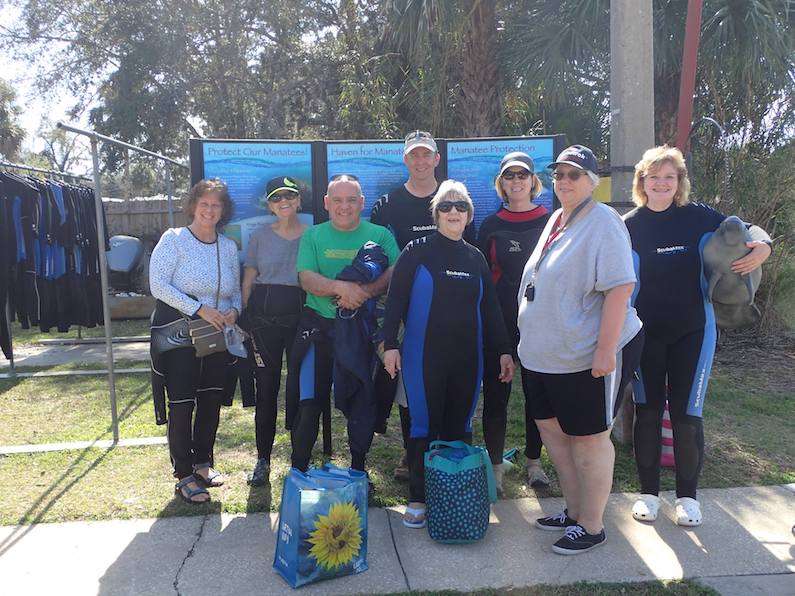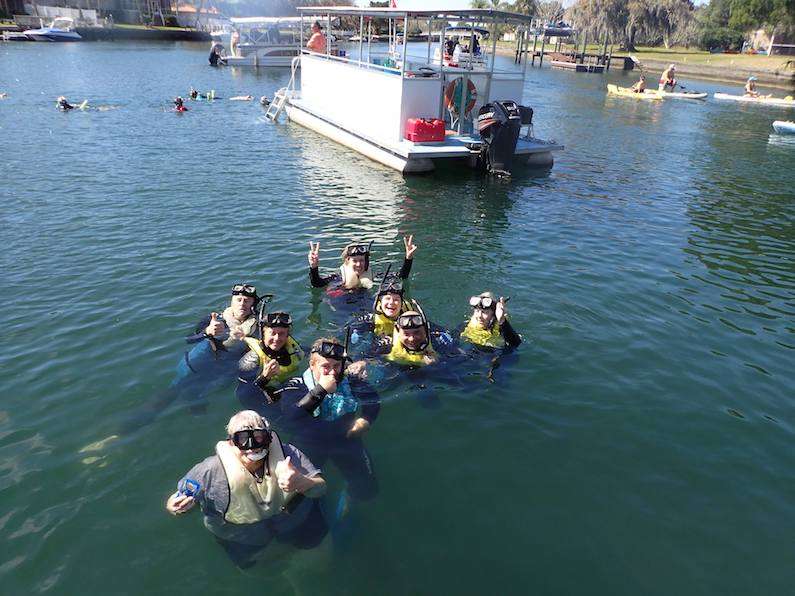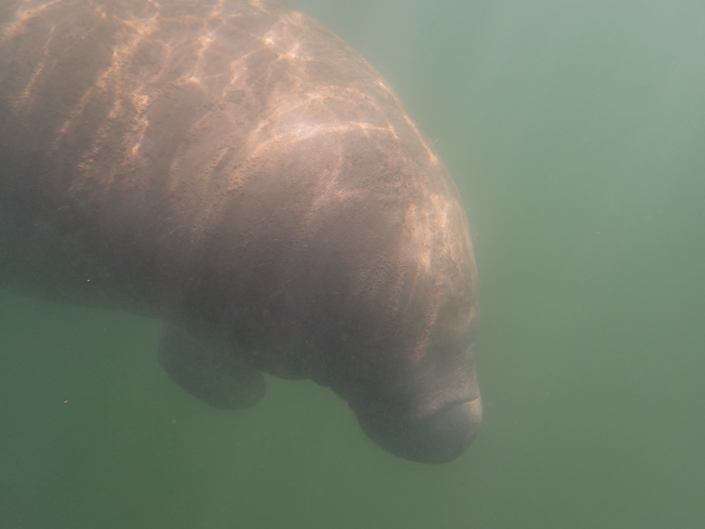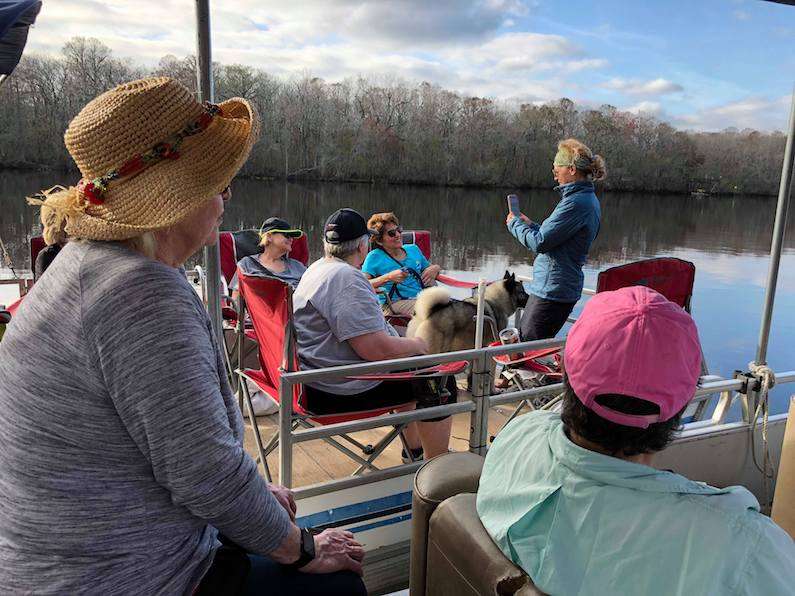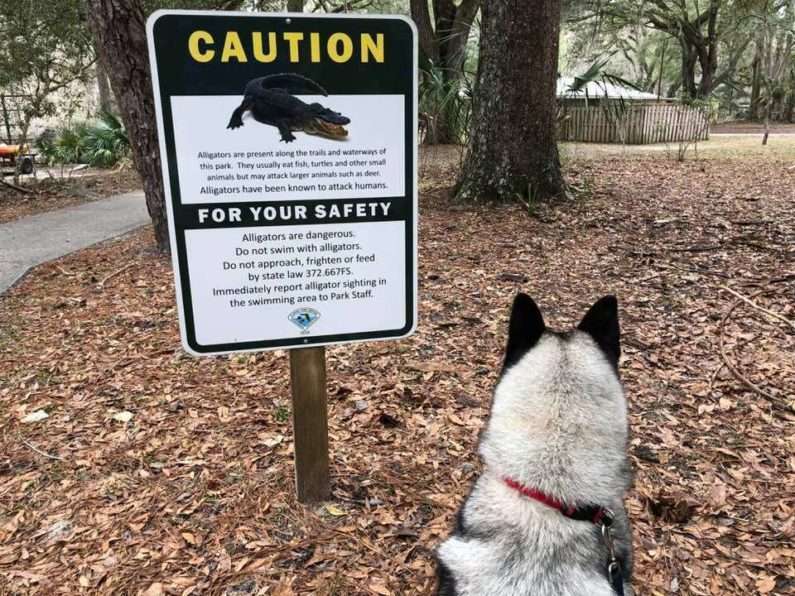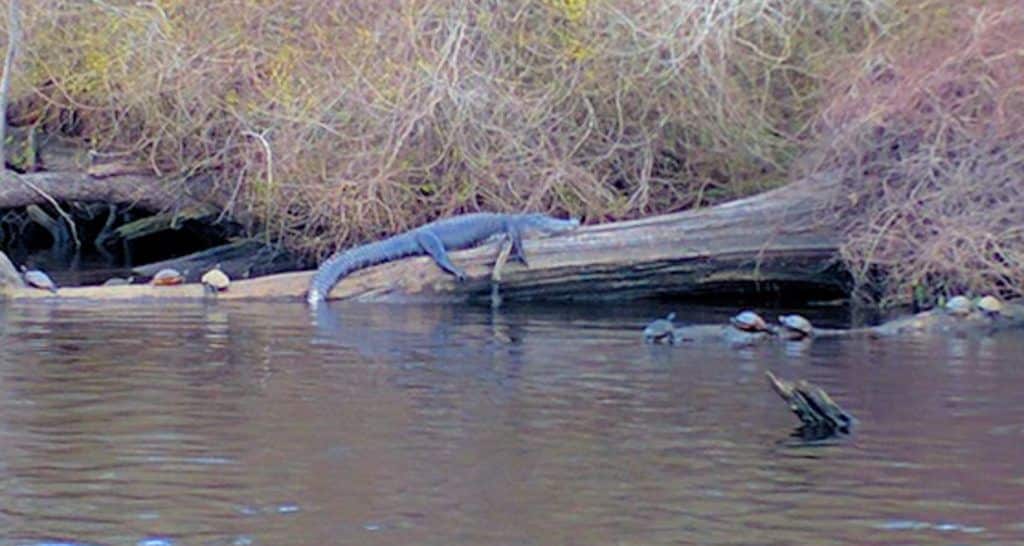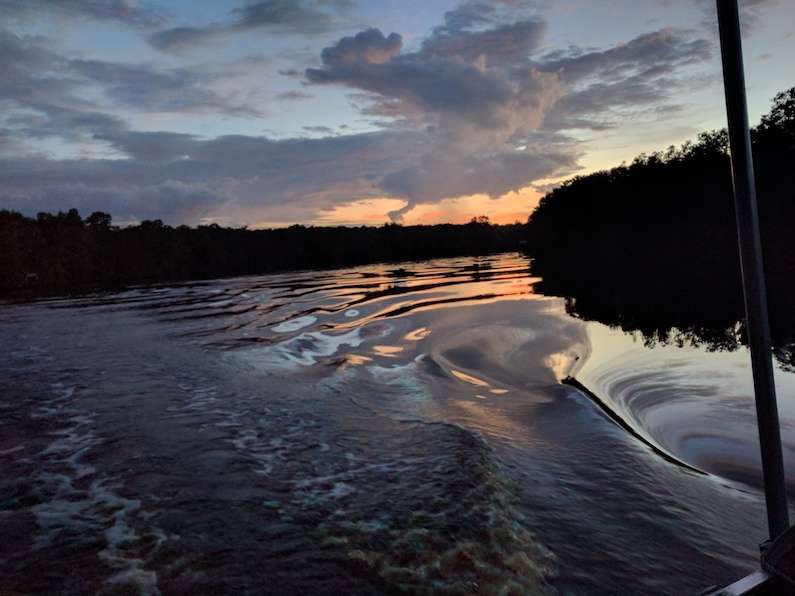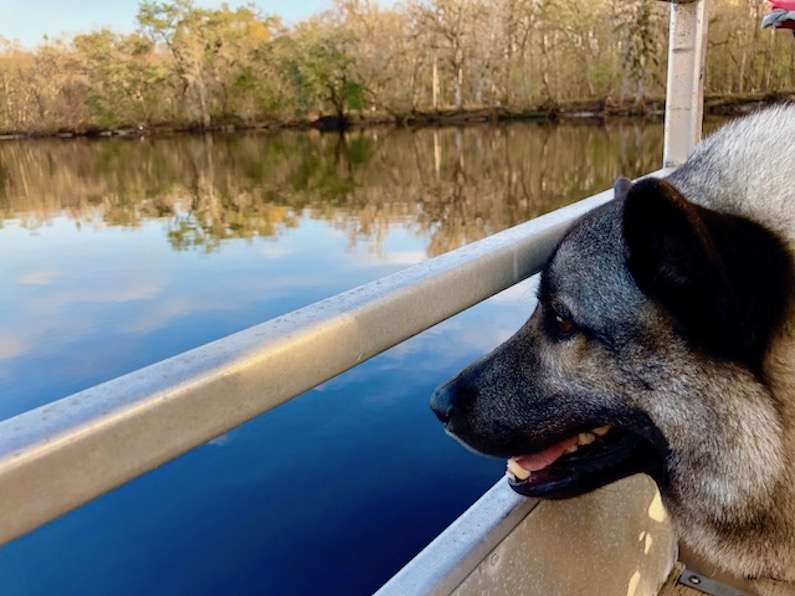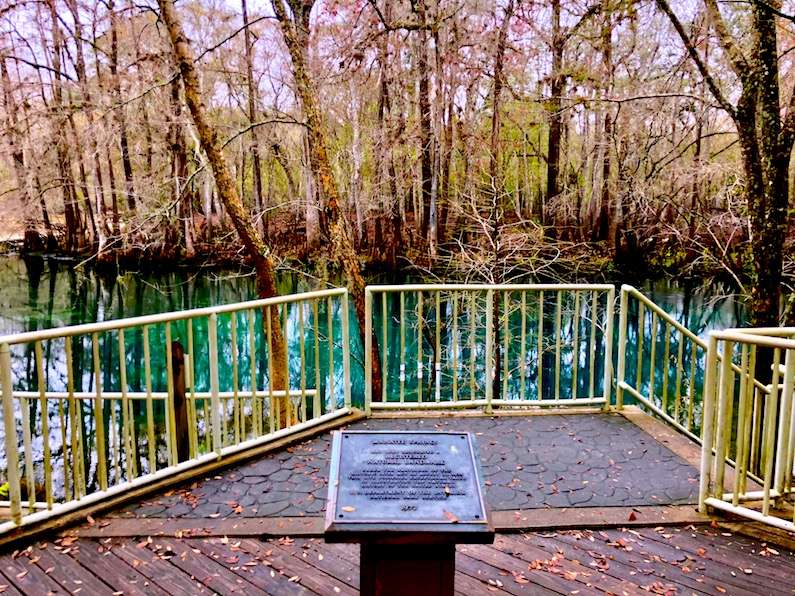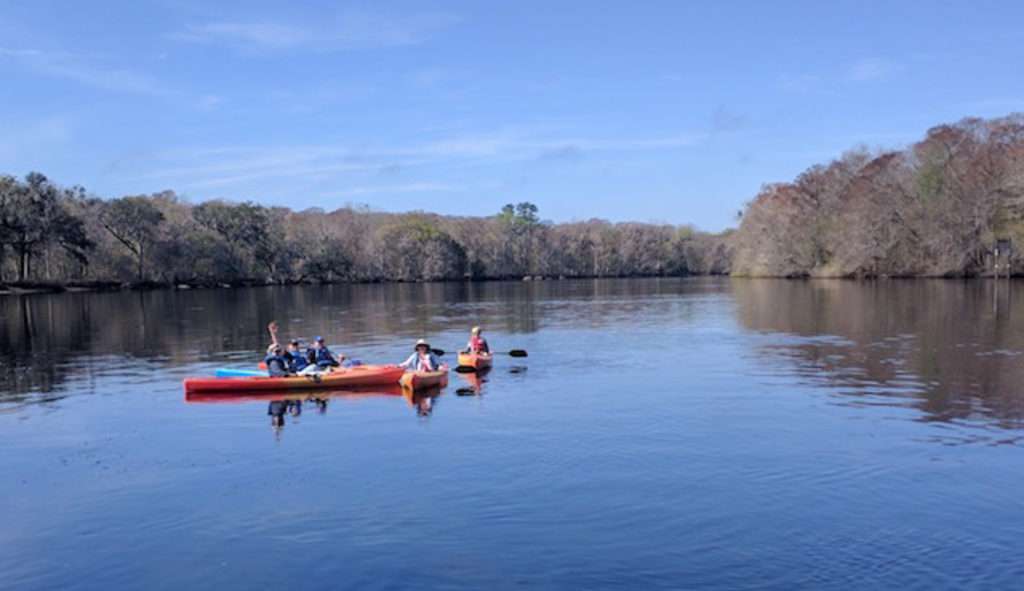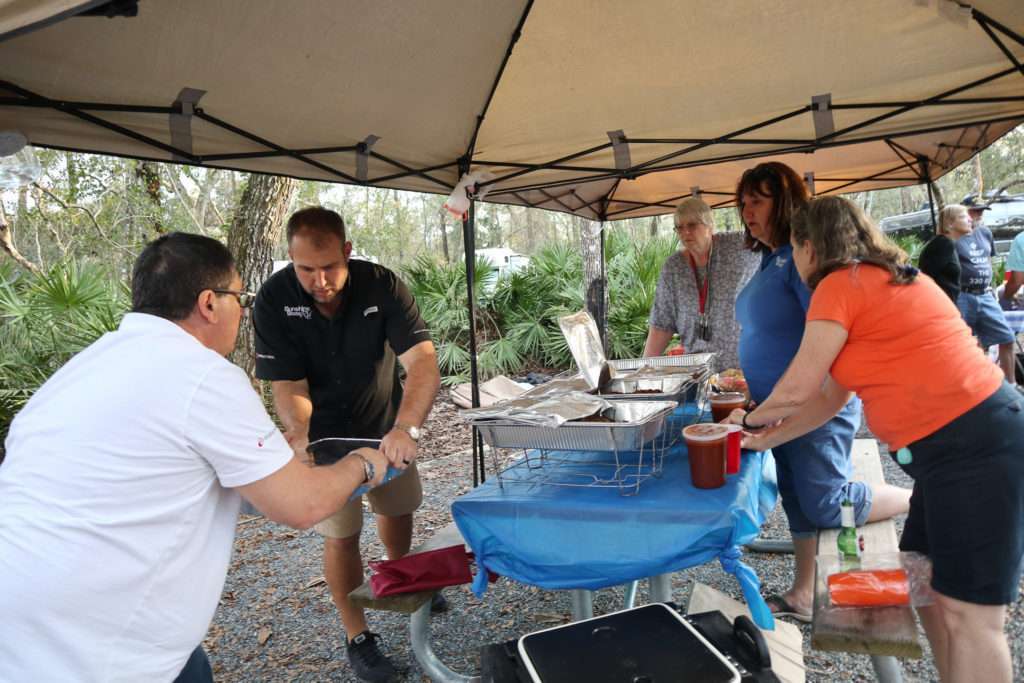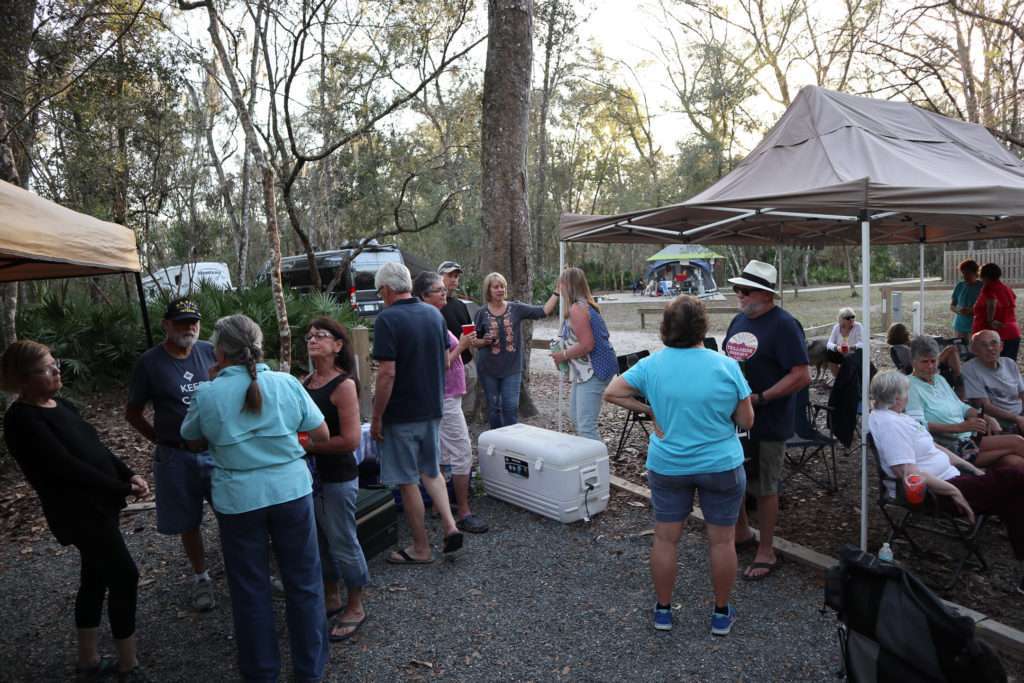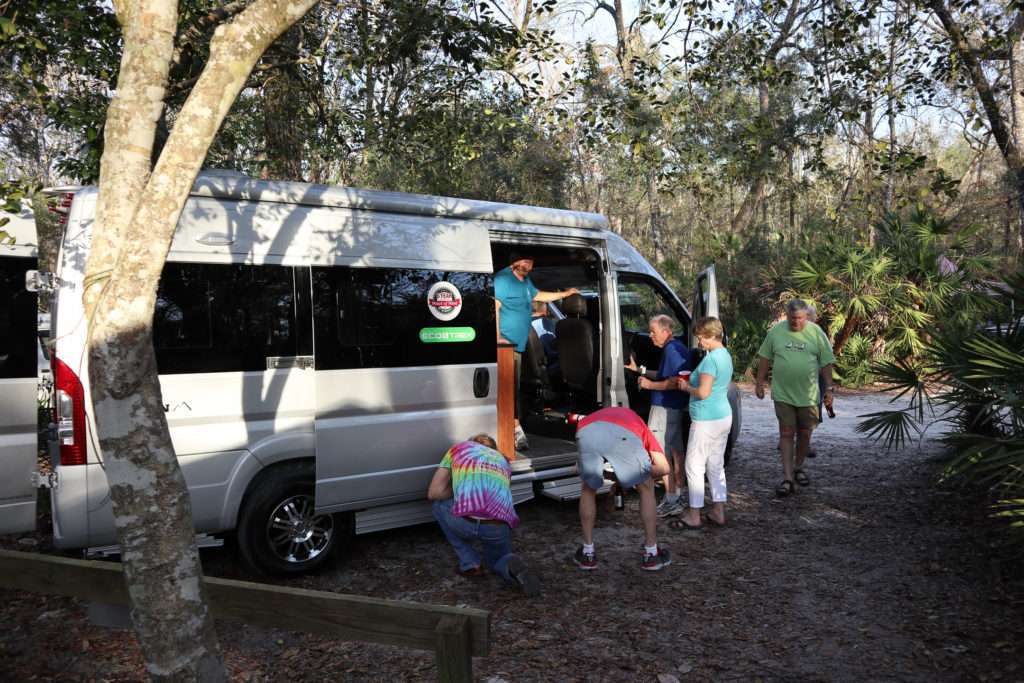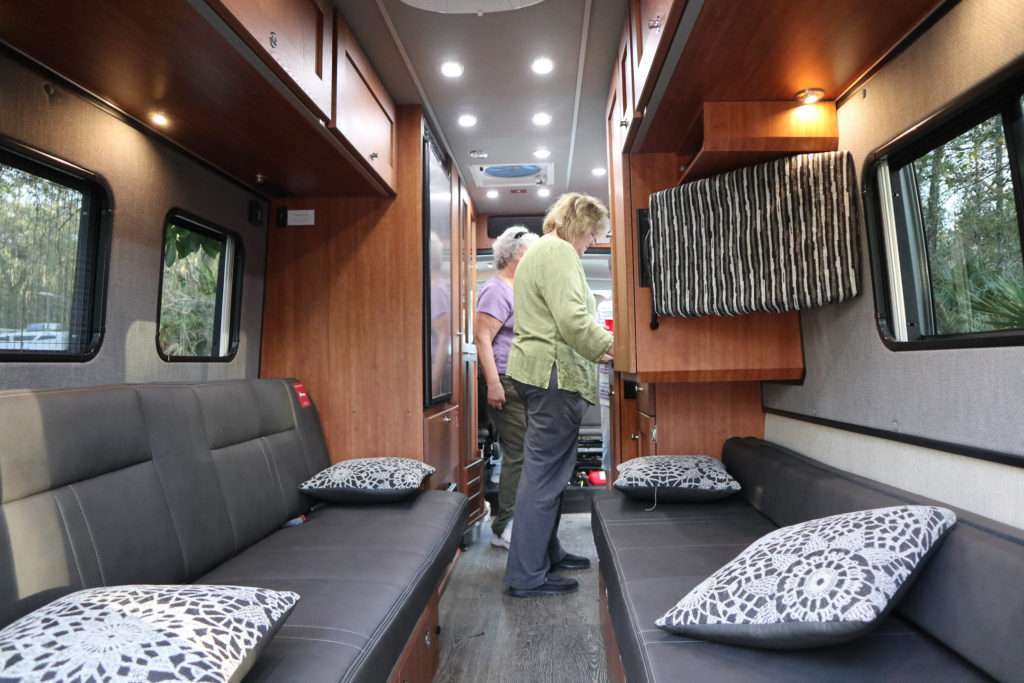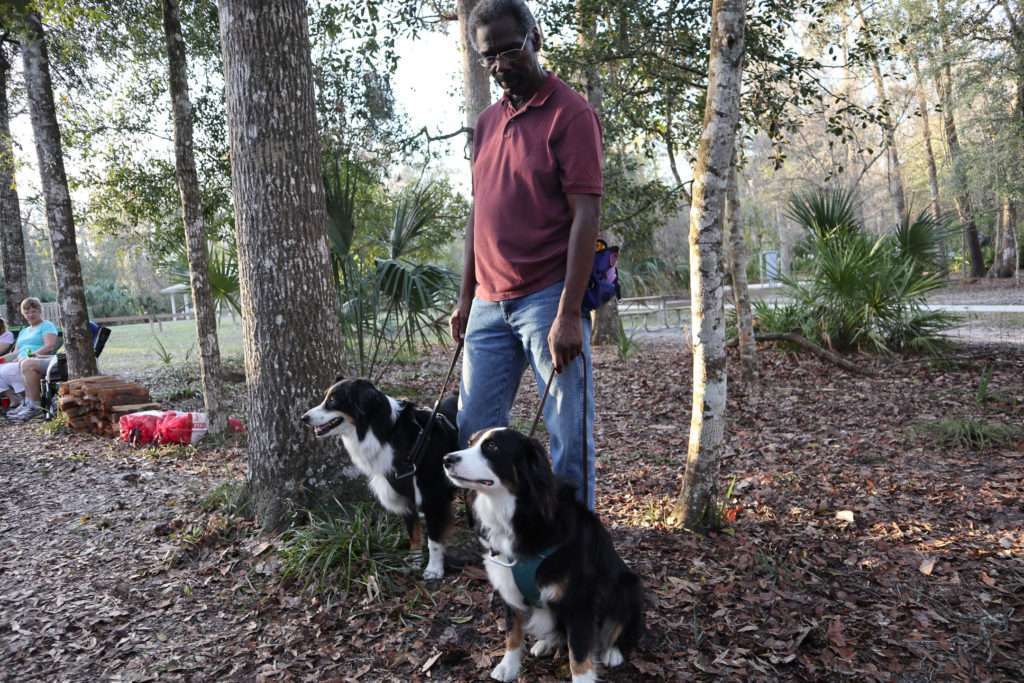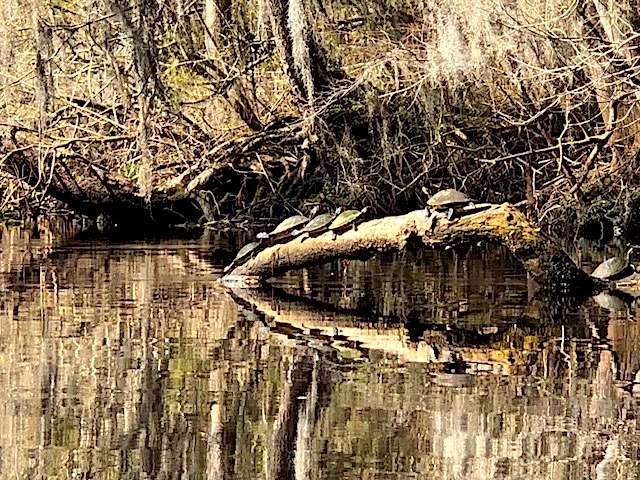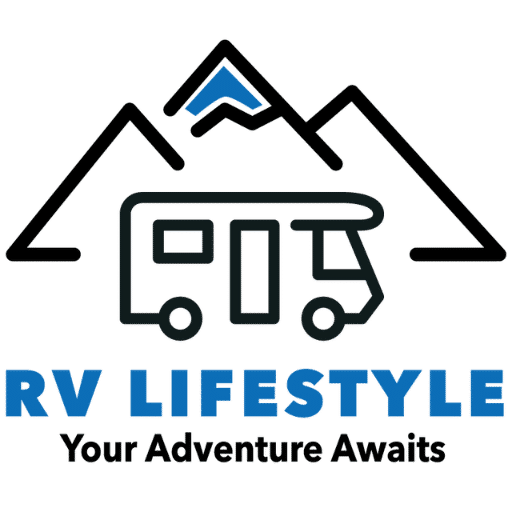Way Down Upon the Suwannee River
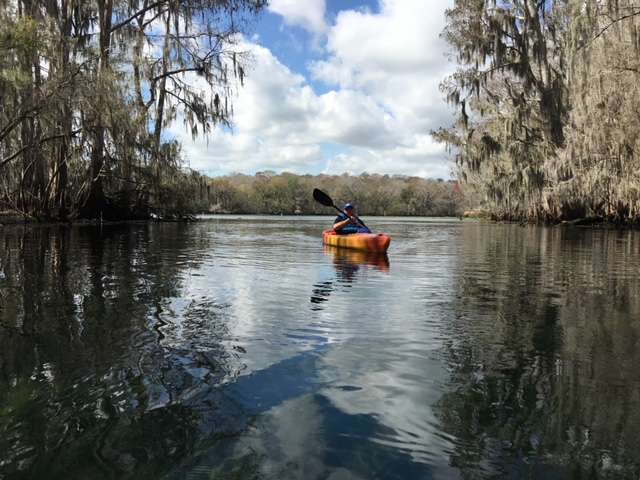
Our Roadtreking gathering at Florida's Manatee Springs State Park had us all singing that line from Steven Foster's 1851 song a lot this past week as we kayaked, canoed, pontooned, photographed and explored this beautiful and undeveloped river.
(NOTE: If you just want to cut to the photos, scroll down. Otherwise, read this post to then end and then see the photos.)
Of the 52 folks who attended this sold out event, most all were able to spend some time on the river spotting alligators, lots of birds, turtles and, of course, manatees. The gentle beasts, affectionately called sea cows by the locals, like to winter in the waters near this and the 54 other fresh water springs in this area of Florida.
All of us were impressed by the Suwannee, which runs 246 miles from Georgia's Okefenokee Swamp to the Gulf of Mexico. As for that the famous song, we learned that Foster himself never saw the river he immortalized in the song “Old Folks at Home,” which he wrote in 1851. Nor, in fact, did he ever set foot in the state of Florida. Nevertheless, the Florida legislature has designated it as the state's official song.
The things you learn while RVing.
But kayaking down the Suwannee was perhaps the most relaxing and peaceful activity I have ever done at one of our gatherings. That's me in the photo above, taken by Laura Robinson. Being right down on the water level, feeling the slow, steady Suwannee current gently moving beneath you, not hearing any noise but the sound of the birds and the occasional plop of a turtle when they pushed off a log as you floated by was mesmerizing.
The scenery was beautiful. Huge, stately cyprus trees dripping with Spanish moss lined both banks. Lots of alligators dozed along the banks. There were egrets and waterfowl of every kind. Though an occasional fishing camp could be spotted tucked back in the tangled growth, the Suwannee is pretty much undeveloped.
Anderson's Outdoor Adventures handled our kayaking, canoeing and pontoon boat excursions. Guide Tim Fason was a wealth of information on the area, its history and the unique wildlife that thrives along the river. Tim and his fellow guide, Charley, can arrange everything from short kayak tours to all day events, catered with a barbeque dinner. Just about every one of our attendees participated in at least one activity on the river and all were delighted by the experience.
Like all of our gatherings, this one was laid back and mellow. Campers could avail themselves of the various river and spring tours we arranged or they could do what they wanted. Some also opted to explore the small towns like nearby Cedar Key, an island city off the northwest coast of Florida, in the Gulf of Mexico. It’s known for the Cedar Key National Wildlife Refuge, a group of small islands with trails and rich birdlife. It's also known for its clams, reputed to be the best in the state.
Others snorkeled and swam in the springs or headed over to Crystal River where they swam with the manatees.
We found manatees every time we went out on the river, usually congregated where the spring flows into the Suwannee. During the daytime in the winter, they don't do much but rest on the bottom, rising every couple of minutes for a quick gulp of air and then submerging again. They are primarily herbivores, feeding on a wide variety of submerged, floating, and shoreline vegetation. A full grown manatee can easily weigh 650 pounds and needs to consumes as much as 100 pounds of wet vegetation every day.
There are about 1,500 manatees in the United States, almost all in Florida. No one knows how many there are in the rest of the world, because it is very difficult and expensive to count them. Over the past two months, Florida wildlife officials say 35 manatees died because of the cold water. That's why you find them around the springs, which are consistently 72 degrees all year round.
Every night we gathered around a campfire. There was a pot luck on Tuesday. On Thursday, Nick, Craig and Sheila from Sunshine State RVs in nearby Gainesvulle catered a barbeque dinner.
Jennifer and I offered rides on our new e-Bikes from Rad Power Bikes. There were lots of takers.
Perhaps the only negative thing was that cell phone service is pretty much non-existent in the park. That meant no Internet. But Campskunk came to the rescue with the very impressive 40 mbps satellite Internet download speeds he was getting on his big Hughes dish. He generously let our campers come by to check email and connect with home. I dubbed his campsite “Telestation Campskunk.”
There were only a few insects or bugs. I'm told that is only because spring is just starting. Indeed, the trees were all budding out as the week came to an end and once summer firmly takes hold, the nearby swamps send out lots of bloodthirsty insects. There were, however, herds of deer that wandered in and out of every campsite all day long, pretty much oblivious to humans. At night, groups of feral hogs rooted about the campground as well.
And there were, as in most places these days, ticks. Two of our campers discovered them on their bodies and I picked one off Bo's eyelid. As we all start traveling again with a new camping season, it may be good to review some of our previous posts about ticks… like this one about removing ticks from pets and this one on what to do if you a tick on your body.
Here's a bunch of photos capturing the flavor of the gathering.
